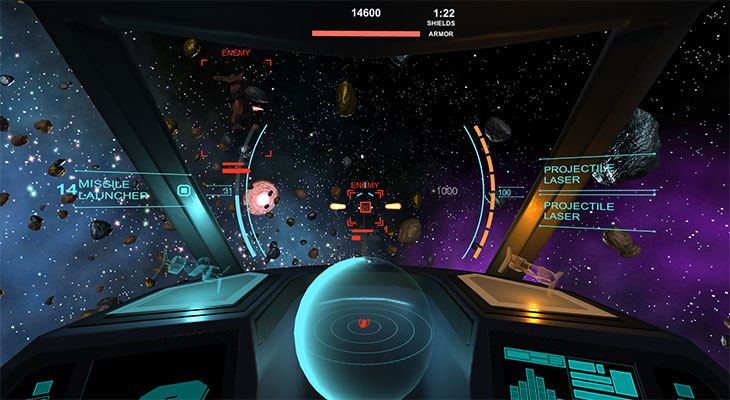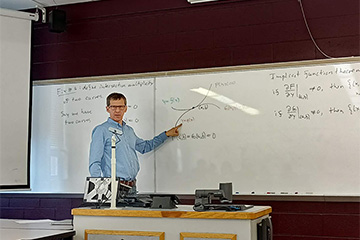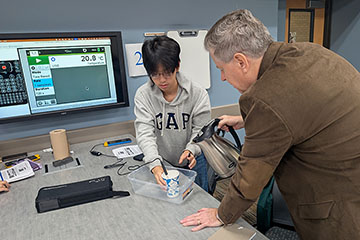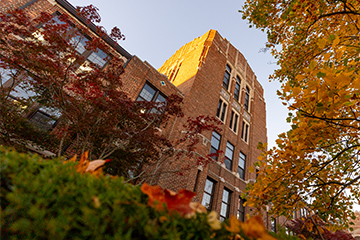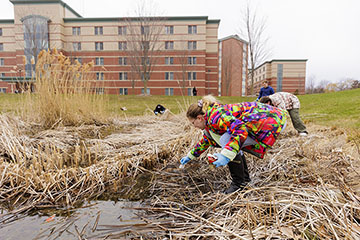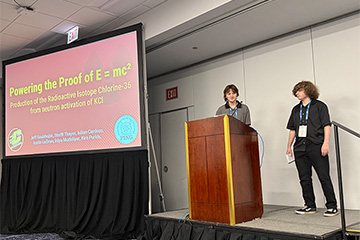Fake flights, real career skills
Computer science students create software to power pilot simulations
Before high-tech flight simulators teach pilots how to fly, someone has to teach the simulators how to simulate.
That's a skill computer science faculty member Alex Redei is sharing with Central Michigan University students who will be the computer professionals of the future.
"We're using all the same tools used in industry," Redei said. "We're doing interesting research that solves real problems and contributes positively to society."
The action plays out in a large open lab in the Engineering Technology Building. Powerful motors drive two life-size simulators through climbs, turns, dives and even barrel rolls. Video screens surround "pilots" enclosed in the windowless cockpits and show the results of their actions at the controls.
Redei and his team of one graduate and four undergraduate students develop software that sends pilots-in-training soaring on virtual flights.
Prepare for takeoff
Alex Redei said he is always looking for talented students to join his simulator lab: computer science majors, electrical or mechanical engineering majors, even artists. To learn about opportunities, contact him at redei1a@cmich.edu.
The team recently visited the University of Nevada, Reno, to introduce their Paragalactic space flight experience at the Fleischmann Planetarium. Redei said the team designed Paragalactic as an "edu-tainment" game to appeal to its middle school target audience. It meets science education standards while providing three levels of action:
- Simulated navigation of a ship between rings.
- A mineral collection mission where two players work together to mine asteroids for precious minerals. The game incorporates real facts about the mineral composition of asteroids.
- A combat mission where players must avoid or destroy rogue drones threatening the nearby space station.
Participants receive an "astronaut ID card" that tracks their progress through the simulation. Registering their ID with an online profile opens the ability to keep track of their scores, earn badges and compete with their friends.
"It's a really incredible opportunity, working on something as cool as this," said computer science senior Collin Van Brabant, who helped program the Paragalactic software and who designed the badge artwork.
Computer science senior John Apo joined Redei's team this semester as part of his Honors Program capstone project.
"This is giving us real-world experience in something we'll be using on the job someday," Apo said. "Also, it's really fun to play at the end of the day."
As the Paragalactic project wraps up, Redei and his students have new challenges in their sights:
- Pilot training for aerial acrobatics and high-G maneuvers.
- Simulating flying in formation with multiple networked simulators.
- Simulating military aircraft such as the KC-130 for in-air refueling trainings.
- Conveying drone telemetry with a human operator for training unmanned aerial vehicles.
"I'm proud to be a part of a research-intensive university," said Redei, who joined CMU in July 2019. He noted that CMU's Carnegie Foundation R2 classification puts it in the top 6% of all universities in terms of research output.
"Another benefit to CMU is the small class sizes," he said. "I enjoy getting to meet and work with the students. This blend of solid research and a supportive student-oriented culture sold me on coming to Central."
